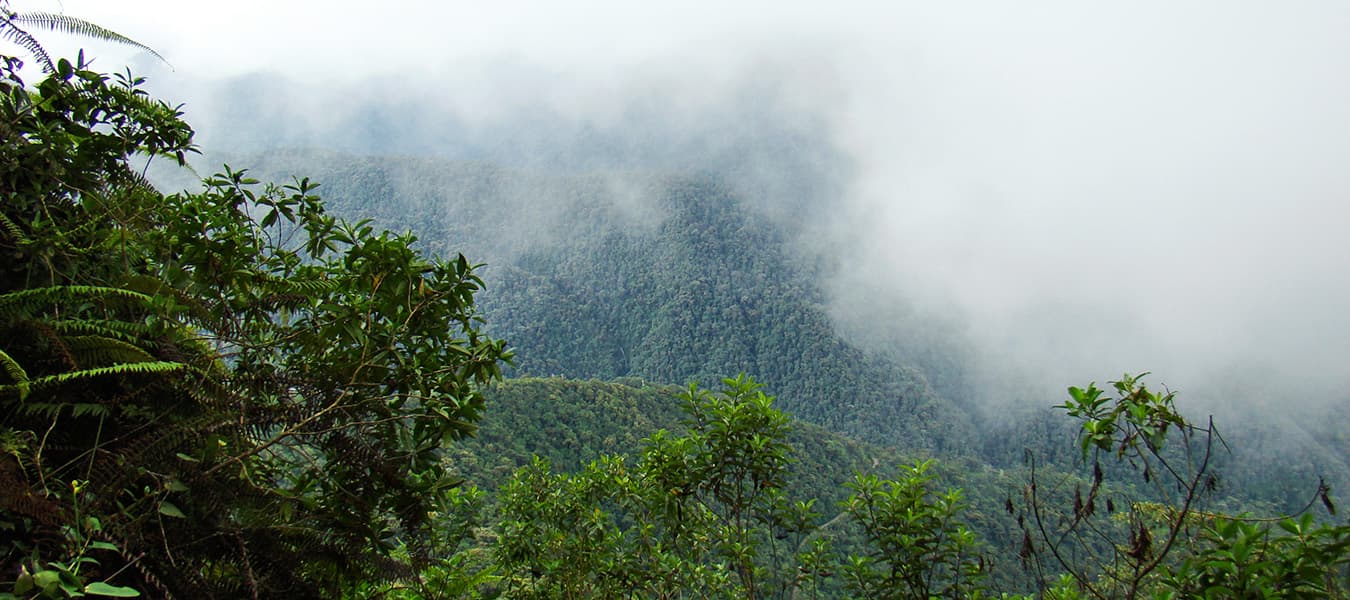
Amazing
Reviving the Andes: How ‘Cloud Trees’ Are Restoring Ecosystems and Ensuring Water Security
The Andes Mountains, stretching across South America, are a natural wonder rich in biodiversity. Among the towering peaks roam spectacled bears, pumas, and the mighty Andean condor. Yet, nestled high in these rugged landscapes grow forests of polylepis trees—often called “cloud trees” for their incredible ability to capture and release water. These ancient trees, though lesser-known, are vital to both ecosystems and the millions of people who rely on the Andes’ water sources.
The Unique Role of Polylepis Trees
Polylepis trees thrive at altitudes of up to 5,000 meters, making them the world’s highest-altitude trees. Their significance lies in their ability to absorb moisture from clouds and melting glaciers. The spongy moss that drapes their trunks stores and gradually releases this water, feeding mountain streams and, eventually, the Amazon River’s headwaters.
However, centuries of deforestation, grazing, and development have reduced the once-vast polylepis forests to a fraction of their original range. Today, only around 500,000 hectares remain—estimated to be just 1% to 10% of the historic coverage. The consequences are far-reaching: degraded ecosystems, eroded soil, disrupted water cycles, and increased vulnerability to flooding. For the millions living in the Andean foothills, these changes pose a growing risk to water security.
Reviving the Forests: A Community-Led Effort
One man determined to reverse this decline is Peruvian biologist Constantino Aucca Chutas. Inspired by his indigenous Quechua roots and deep respect for nature, Aucca co-founded Acción Andina in 2018. This ambitious reforestation initiative, in partnership with the US-based nonprofit Global Forest Generation and Peru’s Asociación Ecosistemas Andinos, aims to restore one million hectares of Andean forests by 2045.
“I grew up enjoying rivers and nature,” Aucca reflects. “I thought it would be fantastic if we could pass this to future generations.”
The effort began in Peru but has since expanded to Ecuador, Argentina, Bolivia, Chile, and Colombia. To date, Acción Andina has planted more than 10 million polylepis trees, thanks to the participation of thousands of indigenous families. This collective approach mirrors the Incan concept of Ayni and Minka—working together for the common good.
A Festival of Trees
One of the most striking events in this initiative is the annual Queuña Raymi festival, held in the valleys around Cusco. The festival is a cultural and environmental celebration that begins with traditional music, dances, and rituals to honor Pachamama (Mother Earth). Participants—men, women, and children in colorful traditional attire—then climb the mountains, carrying saplings of native polylepis trees on their backs.
In a single day, communities have planted as many as 100,000 trees using propagation methods that ensure healthy growth. Recognizing the unique adaptations of polylepis trees to their environments, Acción Andina ensures that only local species are planted.
The work doesn’t stop with planting. To safeguard the saplings, the initiative installs protective fencing, develops fire prevention programs, and works closely with local communities to maintain the growing trees.
Benefits for Communities and the Planet
The collaboration extends beyond reforestation. In exchange for their efforts, communities receive support such as improved medical care, solar energy installations, and help securing legal rights to their land. These protections are crucial to preventing exploitation from industries like mining, logging, and oil extraction.
Aucca highlights the importance of indigenous knowledge, noting that locals, who have lived alongside these forests for generations, understand the trees in ways that outsiders cannot. This shared wisdom strengthens the initiative and ensures its long-term success.
“They’ve seen how these trees grow their whole lives,” Aucca explains. “Their knowledge is invaluable.”
Global Recognition and the Power of Collective Action
Acción Andina has become a model for community-driven conservation. In 2022, the initiative earned Aucca the United Nations’ “Champion of the Earth” title. Two years later, it received the prestigious Earthshot Prize, established by Prince William, for its groundbreaking work in restoring nature.
Elizabeth Mrema, Deputy Executive Director of the UN Environment Programme, praised the project’s global significance. “The nature benefits of polylepis forests are immense. They capture moisture, prevent soil erosion, and play a major role in water security,” Mrema told CNN.
The success of Acción Andina highlights the importance of collaboration. By uniting indigenous communities, environmental groups, and policymakers, the initiative demonstrates that large-scale conservation is not only possible but essential.
“Protecting Mother Earth is a responsibility for all of us,” Aucca says. “We cannot do it alone.”
A Future Built on Tradition
The work of Acción Andina reminds us of the wisdom of past generations. The Inca civilization thrived by living in harmony with nature, a philosophy that resonates today. With millions of trees already planted and millions more to come, polylepis forests are slowly being restored, ensuring a sustainable future for the Andes and the people who call them home.
By honoring traditions, empowering communities, and embracing collective action, these ancient cloud trees are once again nurturing life across the mountains—one sapling at a time.
Amazing
Community Petition Saves Wally the Beaver from Euthanasia

Wally, a beloved beaver who became a community favorite in Northern Virginia, was saved from euthanasia thanks to the efforts of thousands of supporters who rallied together through an online petition.
Wally first gained popularity at Huntley Meadows Park in Fairfax County, where locals and visitors often saw him hard at work building dams. However, wildlife officials considered euthanizing him after concerns arose over flooding and tree damage caused by his dam-building activities.
The community swiftly stepped in, launching a petition that quickly gathered over 10,000 signatures. Advocates argued that the beaver’s positive impact on the ecosystem—creating wetlands and habitats for other wildlife—far outweighed any inconveniences.
Local officials eventually agreed, opting instead for a humane relocation effort. Wally will now be safely moved to a suitable habitat rather than being euthanized.
“This shows how much our community values wildlife,” said Julie Ames, the petition’s creator. “We’re thrilled our voices were heard.”
Residents celebrated the decision, highlighting how Wally’s survival symbolizes the growing awareness of peaceful coexistence with local wildlife.
Amazing
Third Eaglet Joins Big Bear’s Beloved Bald Eagle Family
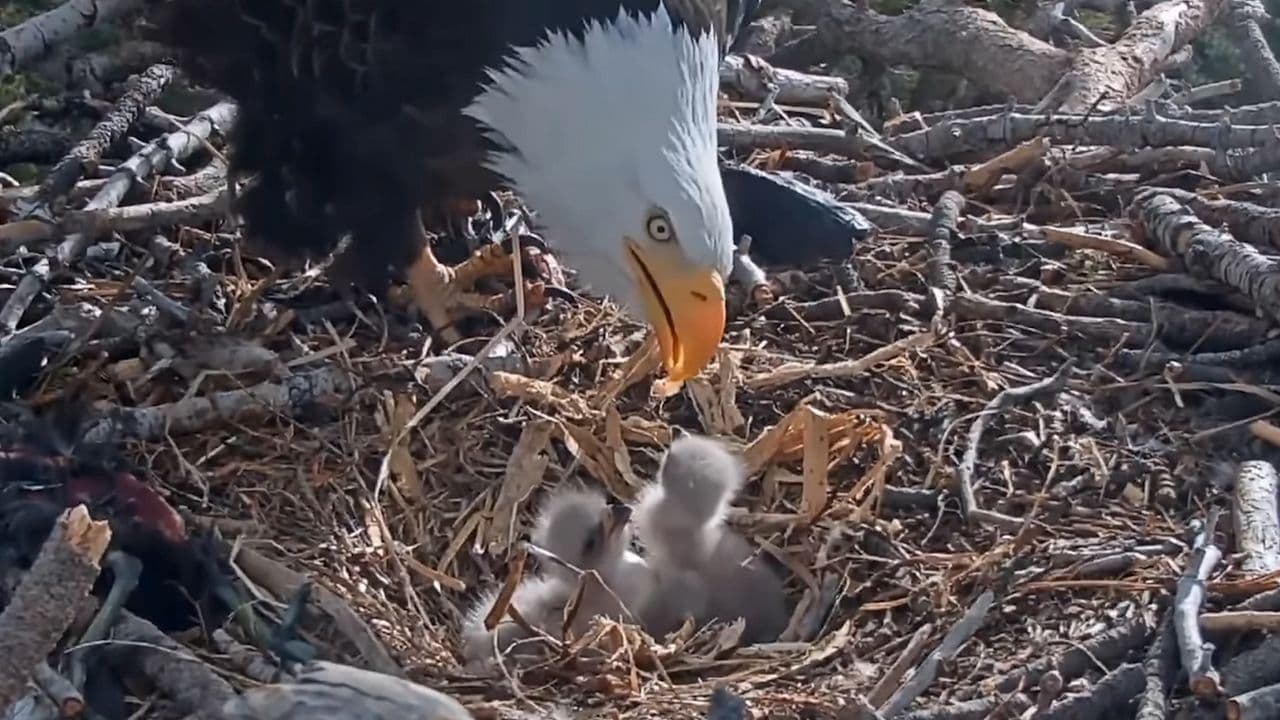
A third eaglet hatched yesterday in the much-loved bald eagle nest near Big Bear Lake, marking a delightful moment for the growing number of wildlife enthusiasts who have been closely watching the family online.
The nest, located in the San Bernardino National Forest near Big Bear, California, has been streaming live via the Friends of Big Bear Valley eagle cam. Observers were excited to witness the third chick hatch, a significant event considering that bald eagles usually lay two eggs, with three being somewhat unusual.
The parents, affectionately named Jackie and Shadow, are local celebrities among bird watchers. According to the Friends of Big Bear Valley, these parents have gained fame for their caring behavior, ensuring their chicks remain healthy and thriving despite the occasional harsh weather conditions.
“The hatch was smooth and perfectly timed,” said Sandy Steers, executive director of Friends of Big Bear Valley. “It’s heartwarming to see this family continue to flourish.”
Wildlife experts emphasize the importance of maintaining a respectful distance, reminding the public that the best way to enjoy and protect these birds is by observing remotely via the eagle cam.
Viewers can continue to monitor the eaglets’ development, celebrating each milestone as the chicks grow into young eagles over the coming weeks.
Amazing
Pocatello’s Last Video Rental Store Preserves Tradition for Devoted Patron

In an era where digital streaming dominates, the closure of Video Stop marked the end of an era for Pocatello, Idaho. However, for one loyal customer, the spirit of the traditional video rental experience continues, thanks to the store owner’s thoughtful initiative.
For over 15 years, 35-year-old Christina Cavanaugh, who has Down syndrome and is mostly nonverbal, maintained a cherished routine of visiting Video Stop almost daily with her mother, Toni. This ritual was integral to Christina’s daily life, providing her with joy and consistency. The prospect of the store’s closure posed a significant disruption to her routine, causing concern for Toni about how to explain the change to her daughter.
Understanding the importance of this routine to Christina, Video Stop’s owner, David Kraning, decided to preserve a portion of the store’s collection. He dedicated a corner in his adjacent business, K & B Kwik Stop, to house these movies, ensuring Christina could continue her beloved visits. This thoughtful gesture not only maintained a sense of normalcy for Christina but also highlighted the deep bonds formed between local businesses and their patrons.
Toni expressed immense relief and gratitude for Kraning’s actions, likening the news to “being sentenced to prison and then getting a reprieve.” She praised the community-oriented approach of Kraning and his staff, who have always been attentive to Christina’s unique needs, even training new employees on how to interact with her during checkout.
While the era of video rental stores may be fading, the compassion and dedication demonstrated by Kraning ensure that, for Christina, the magic of selecting a physical movie remains alive. This story serves as a heartwarming reminder of the impact local businesses can have on the lives of their customers, going beyond transactions to form meaningful, supportive relationships.
Amazing
Former Student’s Surprise $1.8 Million Gift Stuns Wisconsin High School
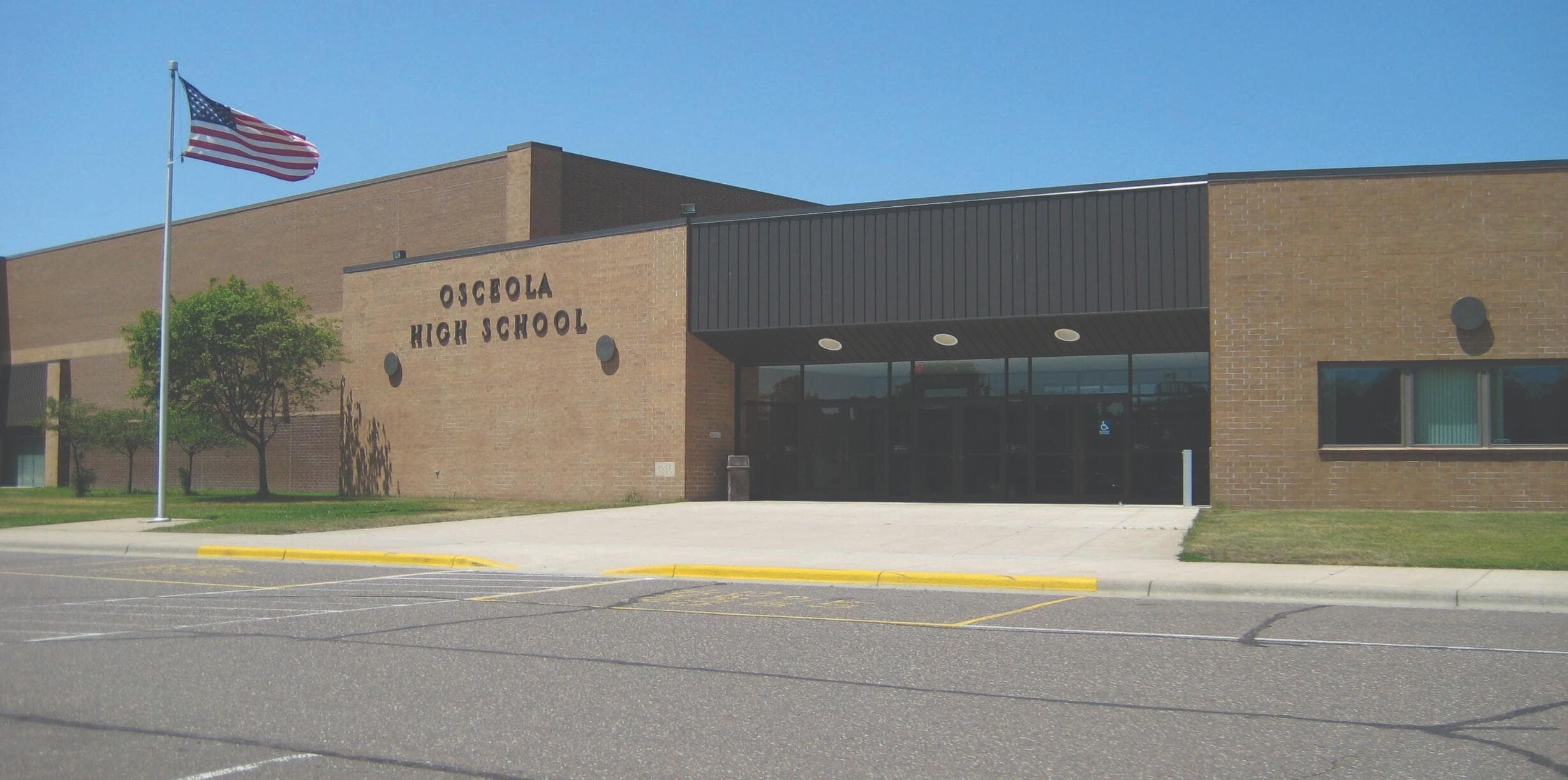
In an age where school budgets are often stretched thin, a small-town Wisconsin high school received an astonishing financial windfall from a former student. Osceola High School, nestled in the tight-knit Village of Osceola, recently learned that a graduate from the Class of 1947, Millicent “Milly” Lindahl, left the school $1.8 million—with more still to come.
A Gift from the Past
Superintendent Becky Styles recalls the moment she learned of the unexpected donation.
“We were absolutely dumbfounded by the amount,” she said. “This doesn’t happen in public schools very often.”
While Milly Lindahl—who later became Milly Chapman—was not widely known in the community, her legacy is now impossible to ignore. A look through old yearbooks revealed she was an active student, participating in the drama club, yearbook committee, school newspaper, and even serving as a cheerleader.
After graduating in 1947, Milly moved away and lived a private life in Maple Grove, Minnesota, with her husband. With no children or immediate family, she made a decision that ensured her name would live on in Osceola—leaving her estate to the high school that had brought her joy in her youth.
Remembering Milly
While details of her later life remain scarce, Superintendent Styles and the local historical society have pieced together a portrait of a woman who cherished her high school years.
“I think it was a place where she found herself, where she could be who she wanted to be,” Styles said. “It was one of the happiest times of her life, and that’s what she held on to.”
Milly and her husband lived quietly, seemingly well within their means. Though her name may have faded from memory in Osceola, her generosity ensures she will be remembered for generations to come.
A Lasting Legacy for Students
Now, the school faces a major decision—how to use the money in a way that honors Milly’s legacy. While many ideas have been floated, Superintendent Styles emphasized that the funds should have a long-term impact rather than being used for short-term needs.
Possible projects include:
- A student commons area to foster community and connection.
- A performance space named in Milly’s honor, recognizing her love of drama and school activities.
- Scholarships or academic programs to support future students.
Before making any final decisions, the school plans to involve the community and wait for the estate to be fully settled.
One thing is certain—Milly Lindahl’s generosity will shape the future of Osceola High School, just as her time there shaped her.
Amazing
Harvesting Fog: A New Solution for Water Scarcity in Dry Cities
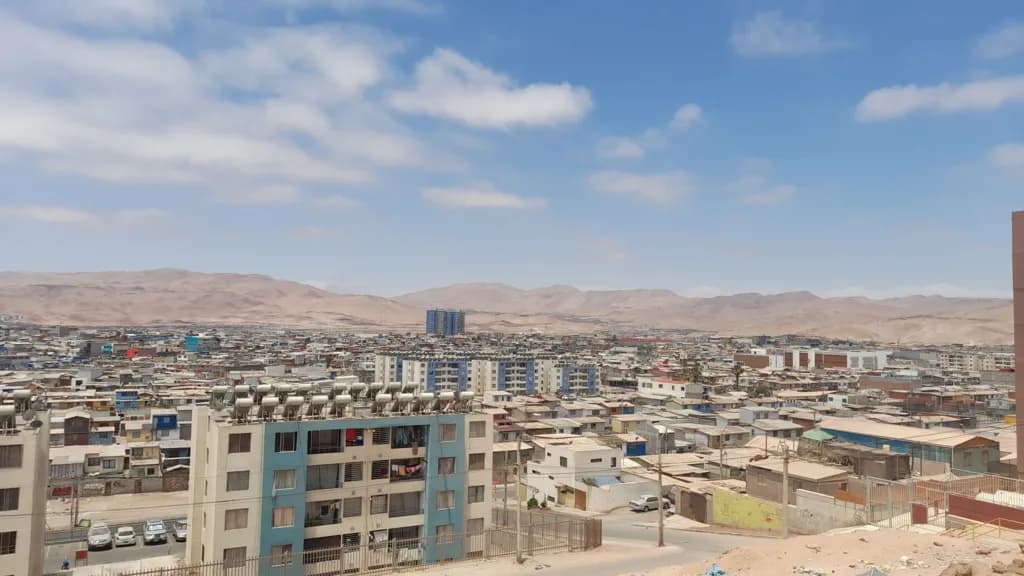
Scientists in Chile are exploring an innovative solution to provide drinking water to some of the driest cities on Earth—harvesting water from fog. Their research suggests that large-scale fog collection could be a sustainable water source for Alto Hospicio, a city in northern Chile that receives less than 0.19 inches (5mm) of rainfall per year.
A City in Need of Water Solutions
Alto Hospicio, perched on the edge of the Atacama Desert, is one of the most arid urban areas in the world. Many residents, particularly in low-income neighborhoods, lack access to a stable water supply and rely on expensive, trucked-in water for their daily needs. With underground aquifers—currently the region’s primary water source—being depleted by urban demand and industrial use, researchers see an urgent need for alternative solutions.
How Fog Harvesting Works
The concept of fog harvesting is simple but effective: a fine mesh net is suspended between poles, and as moisture-laden fog drifts through, water droplets condense on the mesh, collect, and funnel into pipes for storage. This method has been successfully implemented on a small scale in rural parts of South and Central America, and one of the largest existing systems operates in Morocco, capturing moisture from fog near the Sahara Desert.
Scaling Up for Urban Water Needs
Dr. Virginia Carter Gamberini, a researcher at Universidad Mayor, believes that expanding fog collection to a much larger scale could significantly bolster water security in cities like Alto Hospicio. Her team conducted extensive satellite image analysis and weather modeling to identify prime locations where fog harvesting could yield the most water.
The results were promising. Based on an estimated daily water collection rate of 2.5 liters per square meter of mesh, the researchers calculated that:
- 17,000 square meters of mesh could produce 300,000 liters of water per week, enough to replace the trucked-in supply for the city’s poorest communities.
- 110 square meters could meet the annual demand for irrigating green spaces in the city.
- The system could also support hydroponic farming, producing up to 44 pounds (20 kg) of vegetables per month using fog water.
A Natural Fit for Chile’s Coastal Cities
Alto Hospicio’s location along the Pacific coast provides the ideal conditions for fog collection. The city regularly experiences “camanchaca” fog—a dense, low-lying cloud formation generated when warm, humid ocean air moves over the cold Humboldt Current and is pushed inland by winds. With Chile’s unique geography, researchers believe that fog harvesting could be deployed in multiple coastal regions to supplement water supplies.
Dr. Carter and her team are now developing a fog harvesting map of Chile to identify other potential collection sites. They see this technology as a way to enhance urban resilience in the face of climate change, offering a sustainable and decentralized water source for communities struggling with water shortages.
Their findings were published in the journal Frontiers of Environmental Science, adding to the growing global interest in fog harvesting as a climate-adaptive water solution.
As urban populations expand and climate change intensifies water scarcity, fog harvesting could provide a practical, low-impact solution for cities in arid regions. With the right investment and infrastructure, this ancient technique could be the key to securing water for the future.
-

 OMG6 years ago
OMG6 years agoA Couple Gave Birth to the Most Beautiful Twins Ever
-

 OMG7 years ago
OMG7 years ago20 Rare Historical Photos
-

 OMG7 years ago
OMG7 years agoHilarious Airport Photos
-

 Cute6 years ago
Cute6 years agoMom Refuses to Let Daughter Eat Sugar and Years Later This is What She Grows Into
-

 OMG6 years ago
OMG6 years agoTop Secret Air Force One Facts That You Never Knew
-
OMG6 years ago
The Funniest Yearbook Photos Of All Time
-
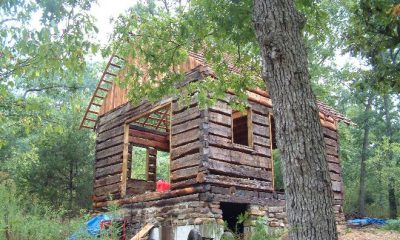
 OMG7 years ago
OMG7 years agoRetired Mathematician Restores Log Cabin
-

 OMG5 years ago
OMG5 years agoWhat Happened When This ‘Duck Dynasty’ Legend Chopped Off His Beard?